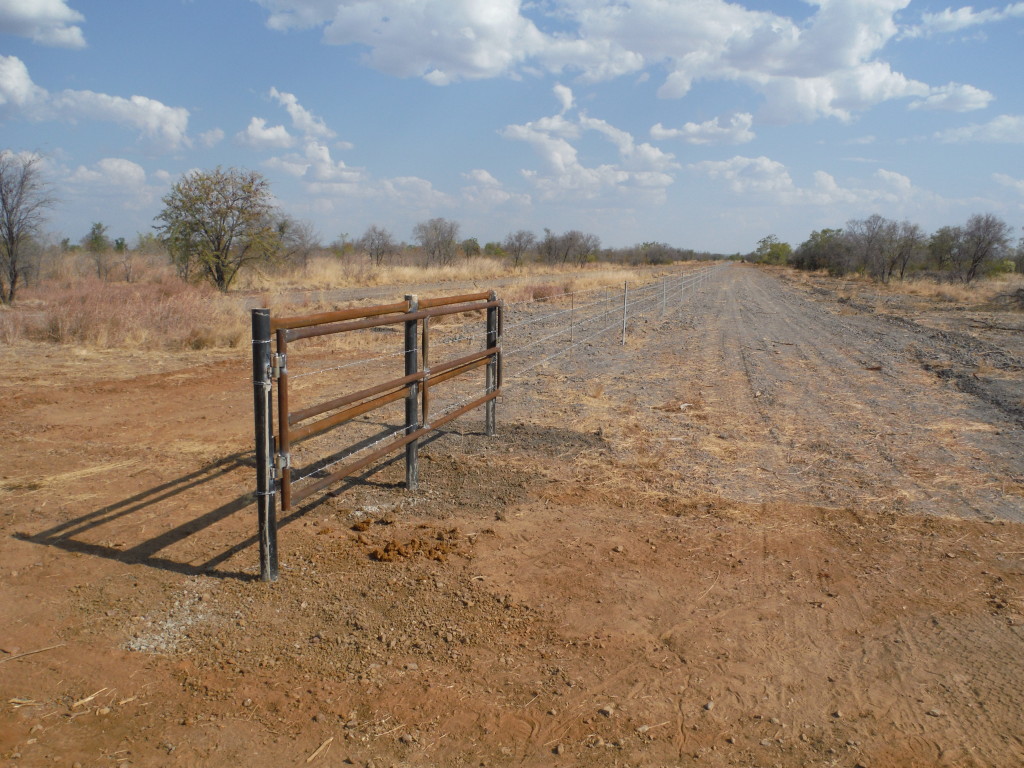Leaps and Bounds
Host: Katherine Research Station
Written by Jodie Ward – Rangeland Research Officer, Katherine Research Station.
After another beautiful sunrise this morning we set off again at a cracking pace for my last day in the fencing crew. Yesterday we managed to get most of the pickets in and ran wire out on three sides of the Shruburn black soil fire plots, with just the finishing touches to complete today, such as hanging gates and tying droppers on. After quickly establishing yesterday that my version of straight is not the same as anyone else’s, I resigned myself to the monotonous task of tying the wire to the pickets. For once though, I really didn’t mind as it gave me a chance to reflect on a few things, including the progress of the beef industry through the years and the technology that has allowed us to do so.
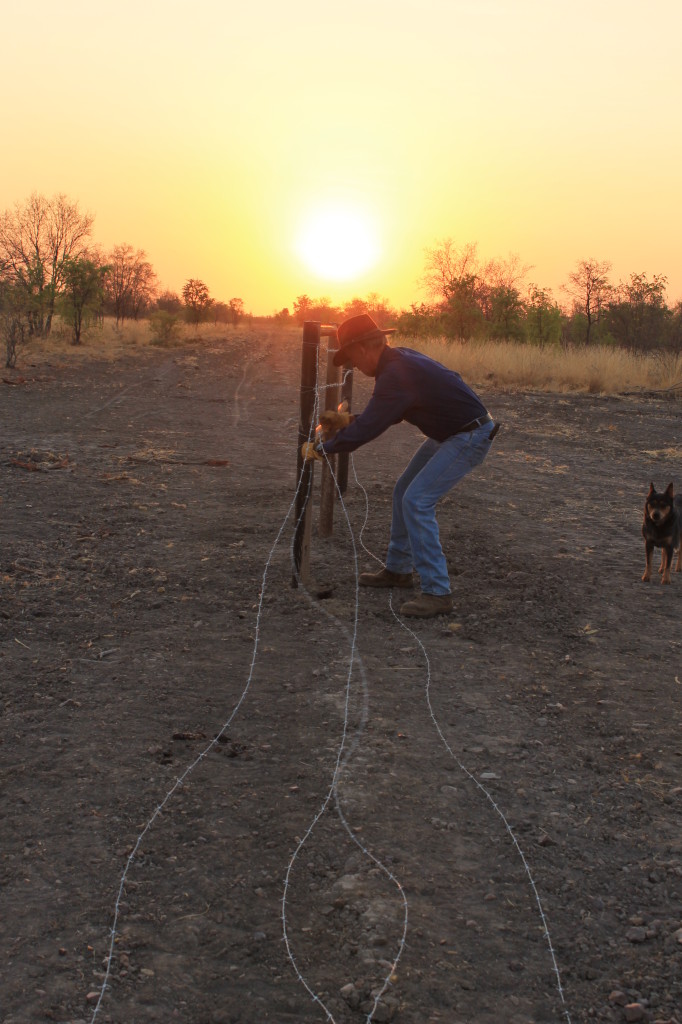 Another beautiful start to the day!
Another beautiful start to the day!
When I was just a kid tagging along with Dad in south-west Queensland on the family farm, pickets were driven into the ground by hand using a dolly (which is a big, heavy pipe which is closed in with a weight at one end, and handles on the sides if you’re lucky). While this doesn’t sound terrible (and it wasn’t at all, it was just the way things were done, no-one complained), it did seem to take a very long time to make substantial progress. However yesterday and today, we had the flashest contraption I’d ever seen! With an air compressor mounted on the back of the ute and a pressurised dolly attached to it, we were putting in pickets in a tenth of the time that it used to take Dad and I!
So while this probably means that I’m extremely out of touch with the industry, and that I am fortunate enough to be working for an organisation that can afford such equipment, it got me to thinking about other technologies that are currently available to assist pastoralists, not only in their day-to-day tasks, but also with holistic management.
For example, there are a number of products readily available that assist the monitoring of breeders’ performance by storing data against the individual cow’s National Livestock Identification Scheme’s (NLIS) microchip ear tag. This allows non-performers, such as barren cows, or cows that continually return without a calf after being diagnosed pregnant in the months before, to be identified and either be sold or treated. Such systems also allow weight gain monitoring of trade animals such as steers and sale heifers. Previous to this, pastoralists either needed to have a very good memory of their stock or have a diligent herd recording system to allow the comparison of individual animal records from past musters. This development in technology is allowing pastoralists to more effectively manage their herd, thereby increasing the efficiency of land usage.
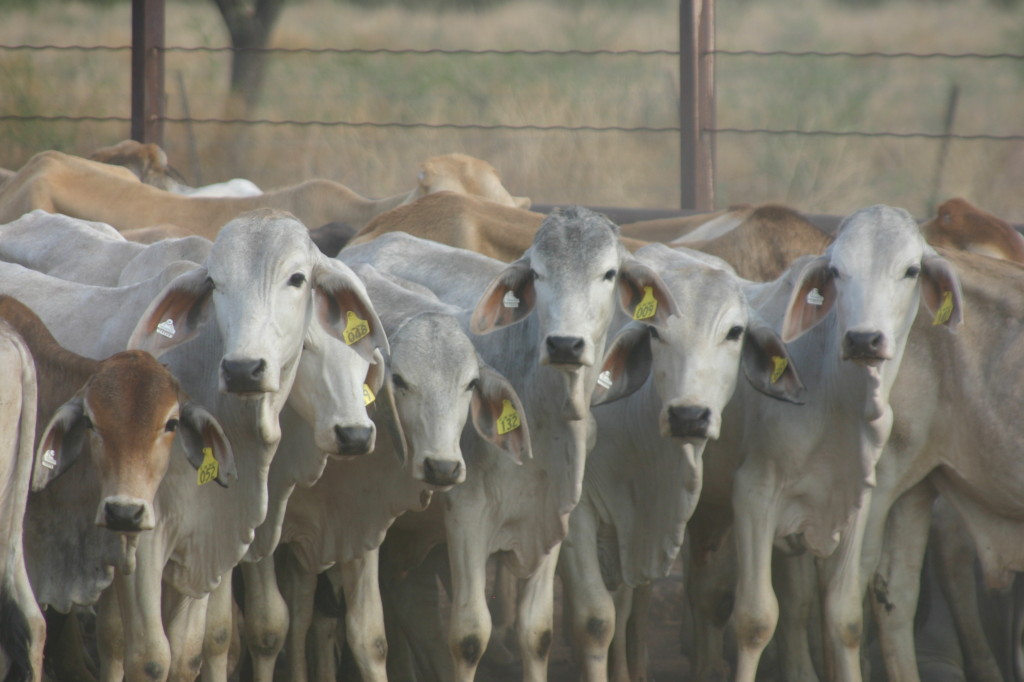 Weaners with their NLIS (white) tags in.
Weaners with their NLIS (white) tags in.
There are also herd modelling programs which allow the user to plan, evaluate, and improve the profitability of their enterprise by economic modelling a variety of alternative management practices. In yesteryear, this was all taken to the bank manager as a hand written ledger with little room for edits or mistakes, with many hours spent recalculating and redrawing the extensive spread sheets.
Thinking of spread sheets, just recently, the Queensland DAFF and MLA released the iPhone Stocktake app which assists the calculation of carrying capacities (estimating how many cattle can live in an area for a long period of time without degrading the condition of the land). Although not yet ready for use in the NT, Queensland pastoralists are able to calculate these as well as short term feed budgets on their phone while they are actually in the paddock, no mobile network required. In the current age of “proof is necessary”, having this formalised on paper or in an app like this, it can only a good thing.
On top of these incredible advances in technology, there are also many yet-to-be-made commercially available products such as solar powered Autodrafters which can draft cattle remotely according to their NLIS microchip or rate of weight gain, ePreg which is a non-invasive pregnancy testing machine, and potentially Virtual Fences which may make physical fences a thing of the past (For more information about any of these products, see this website: http://crc-rep.com/).
So I’m not saying that I think we have it all too easy these days, and I’m definitely not saying that today’s pastoralists don’t work as hard as they did back in the day – I’m saying that they do! What I am saying is that in this modern era, all people involved in the beef industry have the ability to work smarter as well as hard, which gives us the ability to make change at a faster rate, adapt quicker to market changes, manage our land more efficiently as well as making more holistic management decisions, because now, we have the information right at our fingertips. And do you know why this is a good thing? Because these technologies and new information are based on proven science. Science that someone like me has put the ground work into truthing. And this is what makes me excited to be involved in the beef industry. If this is how far we’ve come, who knows what is ahead of us?
Cannot wait to find out!
Cheers,
Jodie.
PS – After finishing with the fencing crew today, I am pleased to reveal my hands seem to have escaped relatively unscathed. My near new gloves however, might be drawing close to their Used By Date!
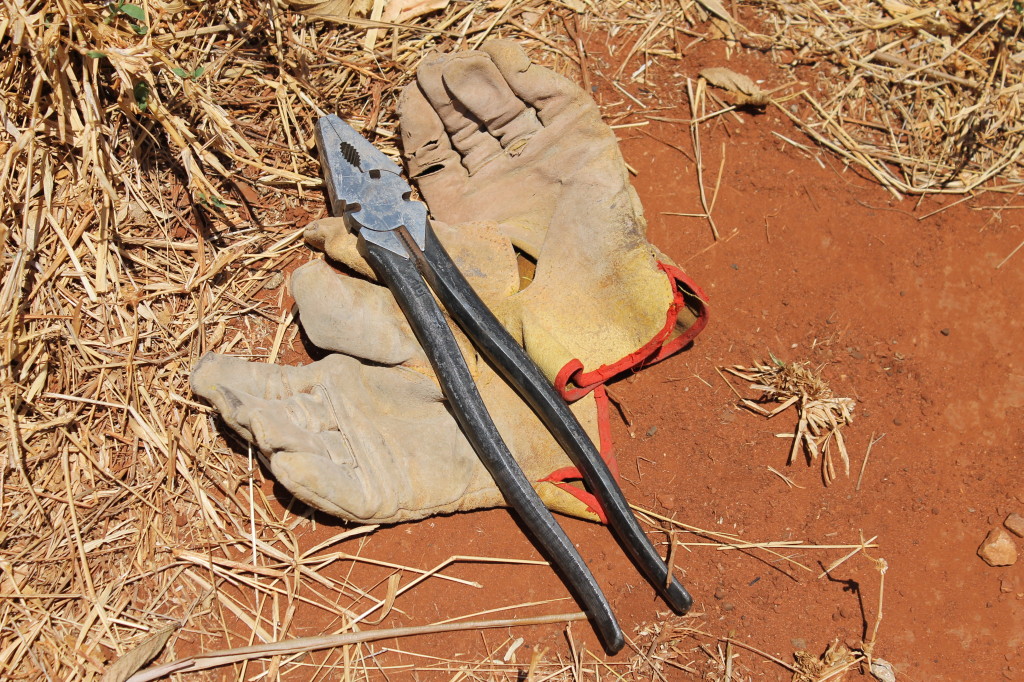 Might need to be thrown out I think!
Might need to be thrown out I think!
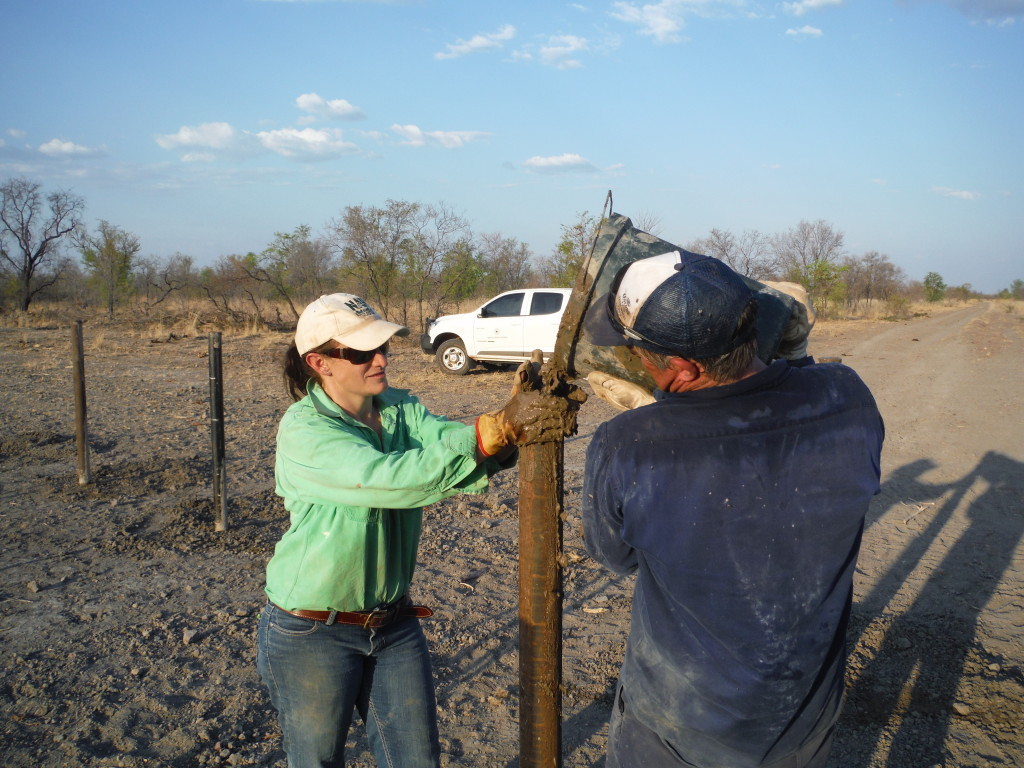 After concreting the base, we poured concrete down the centre of the end assembly posts as well -these buggers aren’t going anywhere!
After concreting the base, we poured concrete down the centre of the end assembly posts as well -these buggers aren’t going anywhere!
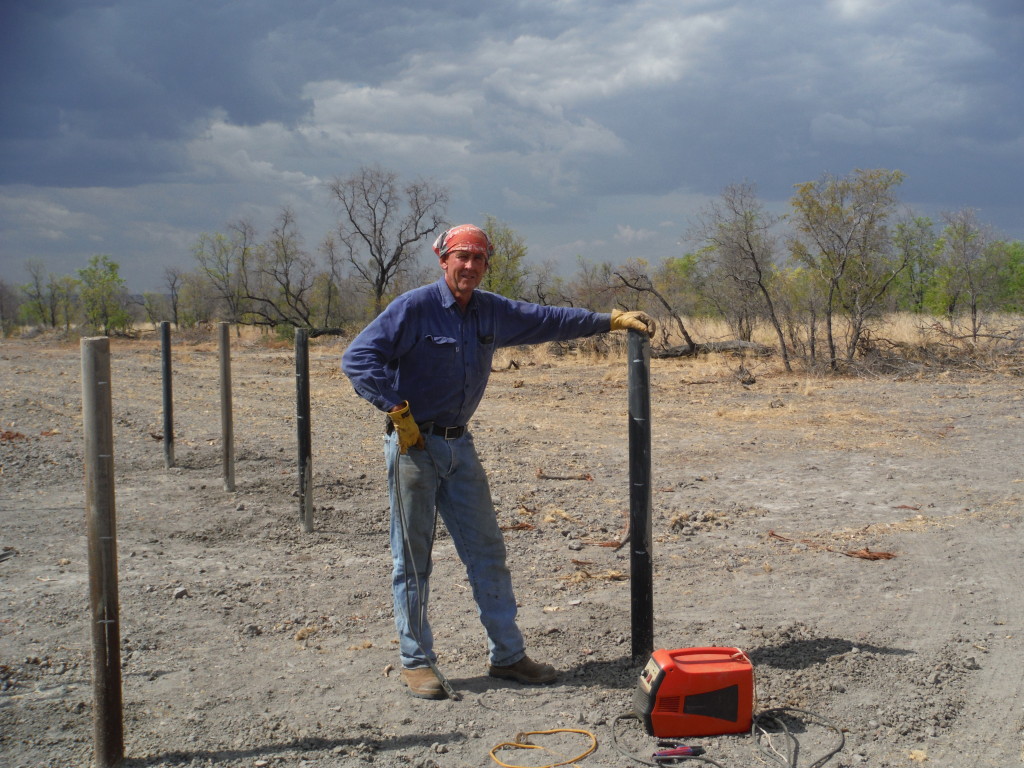 All bark and no bite. Not a single drop fell out of these promising clouds.
All bark and no bite. Not a single drop fell out of these promising clouds.

